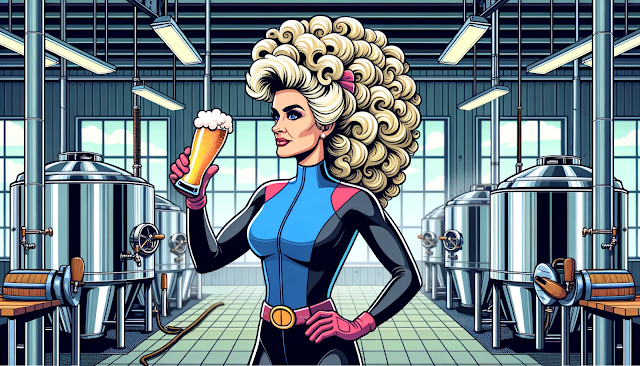The complex chemical reactions that occur during brewing are natural. At times, the aroma of hops might overshadow these reactions. It's essential to understand when these aromas and flavors are a genuine concern.
Remember, as many seasoned brewers would attest: time to properly condition is a brewer's best ally.
Decoding Common Off Flavors in Beer
Taste of Green or Rotten Apples: This could indicate the presence of acetaldehyde, which forms early in the fermentation process. Yeast eventually converts this to alcohol. By allowing extended primary fermentation and conditioning for a minimum of three weeks, you can reduce the acetaldehyde content. Ensuring you pitch an adequate amount of yeast can also help in its efficient conversion.
Cheesy Beer: This unwanted taste is likely due to isolaveric acid, a result of oxidized alpha acids in hops. Using fresh hops and proper storage can address this. Also, when using fruits in brewing, ensure they are clean to prevent unwanted bacteria.
The Skunked Beer Mystery: Also known as 'lightstruck' beer, this is caused by UV radiation affecting the iso-alpha acids from hops. Brown glass bottles can help prevent this, but the best solution is to store beer away from direct sunlight and UV lights.
The Wet Cardboard Taste: This stale taste is a sign of over oxygenation. Oxygen is beneficial before primary fermentation but detrimental during and post fermentation. To avoid this, ensure your fermenter is sealed well and the airlock is filled.
The Paint Thinner Aroma: This is attributed to fusel alcohols, often produced when fermentation occurs at high temperatures or when the beer has prolonged contact with trub. Using the right amount of yeast and fermenting at recommended temperatures can help prevent this. I've had this happen once and I can assure you there is not recovering if this has happened to your brew!
Grassy Notes: These could arise from using old malt or grains exposed to moisture. Fresh ingredients and proper storage are crucial. Overhopping or extended dry hopping can also contribute to this flavor.
Cider-like Flavors: Using excessive corn or cane sugar can impart a cider taste to your beer. Consider reducing sugar or using alternatives like honey or malt extract.
Fruity Aromas: Isoamyl acetate, a common ester, can give beer a fruity smell. Proper fermentation temperature and using the right amount of yeast can control its production.
Other Noteworthy Flavors:
- Tartness: Often due to polyphenols from over-milled and over-steeped grains.
- Butterscotch: Diacetyl can produce this flavor, influenced by temperature and oxygenation after yeast pitching.
- Metallic Notes: Usually from non-stainless metal kettles or poor water quality.
While we've touched on many off flavors, there are still more out there. Brewing is a continuous learning process. By adhering to tried-and-tested brewing practices, ensuring cleanliness, using fresh ingredients, and maintaining proper temperatures, you're well on your way to crafting delightful brews. Remember, every mistake is a lesson, and every brew brings you one step closer to perfection. Cheers!

